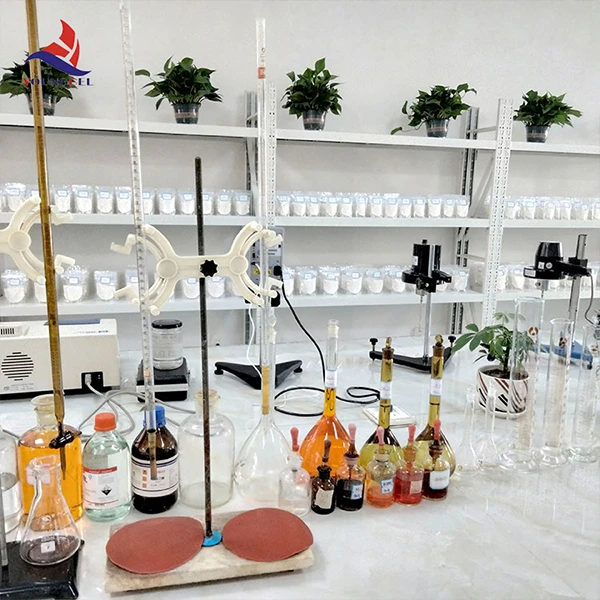The Role of Mortar in Construction A Focus on Hydroxypropyl Methylcellulose (HPMC)
In the ever-evolving world of construction materials, the role of mortar cannot be underestimated. It serves as a crucial element in masonry and tile applications, providing not just adhesion but also strength and durability to structures. One of the significant advancements in mortar technology is the incorporation of Hydroxypropyl Methylcellulose (HPMC), a synthetic polymer that enhances the properties of mortar mixtures. This article explores how HPMC is changing the landscape of construction mortars.
Understanding Mortar
Mortar is typically a mixture of sand, water, and a binding agent, such as cement or lime. It is used to bind bricks, stones, and tiles together, filling the gaps and providing structural stability. Traditionally, mortar was made with simple mixtures, but modern construction demands more performance from these materials. Engineers and builders seek mortars that can accommodate environmental changes, resist cracking, and offer better adhesion.
The Importance of HPMC
Hydroxypropyl Methylcellulose (HPMC) is a cellulose ether that boasts excellent water-retention properties, which is vital for an effective mortar application. When added to mortar, HPMC improves workability, allowing for easier application and manipulation during the construction phase. This is particularly important for tiling and plastering, where even distribution and adherence to surfaces are critical for long-lasting results.
Benefits of HPMC-Modified Mortars
1. Enhanced Workability One of the most immediate benefits of incorporating HPMC into mortar is its improved workability. HPMC increases the viscosity of the mixture, allowing for better control during application. This is especially advantageous in vertical applications, where materials tend to sag or slide before setting.
2. Superior Water Retention Mortars with HPMC retain water more effectively than their traditional counterparts. This property ensures that the bonding agents remain hydrated for longer periods, facilitating chemical reactions necessary for hardening. Better water retention leads to improved adhesion and reduces the risk of cracking during the curing process.
mortar hpmc

3. Extended Open Time The inclusion of HPMC can significantly extend the open time of mortar. Open time refers to the duration during which the mortar remains workable after being applied to a surface. This is particularly beneficial in larger projects, allowing for adjustments in tile placement without the mortar drying out too quickly.
4. Resistance to Shrinkage and Cracking Mortars enhanced with HPMC show a notable reduction in shrinkage and cracking as they cure. This resilience is crucial in preventing structural issues down the line, ensuring that the integrity of the bonds remains intact.
5. Compatibility with Various Substrates HPMC-modified mortars exhibit better adhesion to a variety of substrates, including ceramic, porcelain, and natural stone tiles. This versatility makes them a preferred choice for contractors who aim to achieve high-quality finishes in diverse applications.
Real-World Applications and Future Directions
The incorporation of HPMC in mortars has found widespread acceptance in both residential and commercial projects. From tiling kitchens and bathrooms to large-scale facade installations, HPMC-modified mortars are becoming the standard due to their reliability and performance.
As the demand for sustainable building practices grows, future research may explore the environmental impact of HPMC production and its potential for modification to enhance sustainability. Innovations in bio-based and recycled cellulose ethers could further advance mortar technology while maintaining effectiveness.
Conclusion
The addition of Hydroxypropyl Methylcellulose (HPMC) to mortar formulations marks a significant step forward in construction materials technology. By enhancing workability, water retention, open time, and adhesion, HPMC-modified mortars provide builders and engineers with superior tools for creating durable structures. As construction methods continue to evolve, HPMC and similar innovations will likely play an instrumental role in shaping the future of masonry and tiling applications, ultimately leading to more resilient and sustainable buildings.
-
The Application and Significance of Construction RdpNewsMay.19,2025
-
Industrial Grade HpmcNewsMay.19,2025
-
Building Coating Adhesive Building Coating Adhesive HpmcNewsMay.19,2025
-
Application Of Hpmc For Detergent For Detergent In DetergentsNewsMay.19,2025
-
Application Of Hpmc Cellulose In Cement-Based MaterialsNewsMay.19,2025
-
Application Of High Quality Hpmc For Construction In The Field Of ConstructionNewsMay.19,2025




